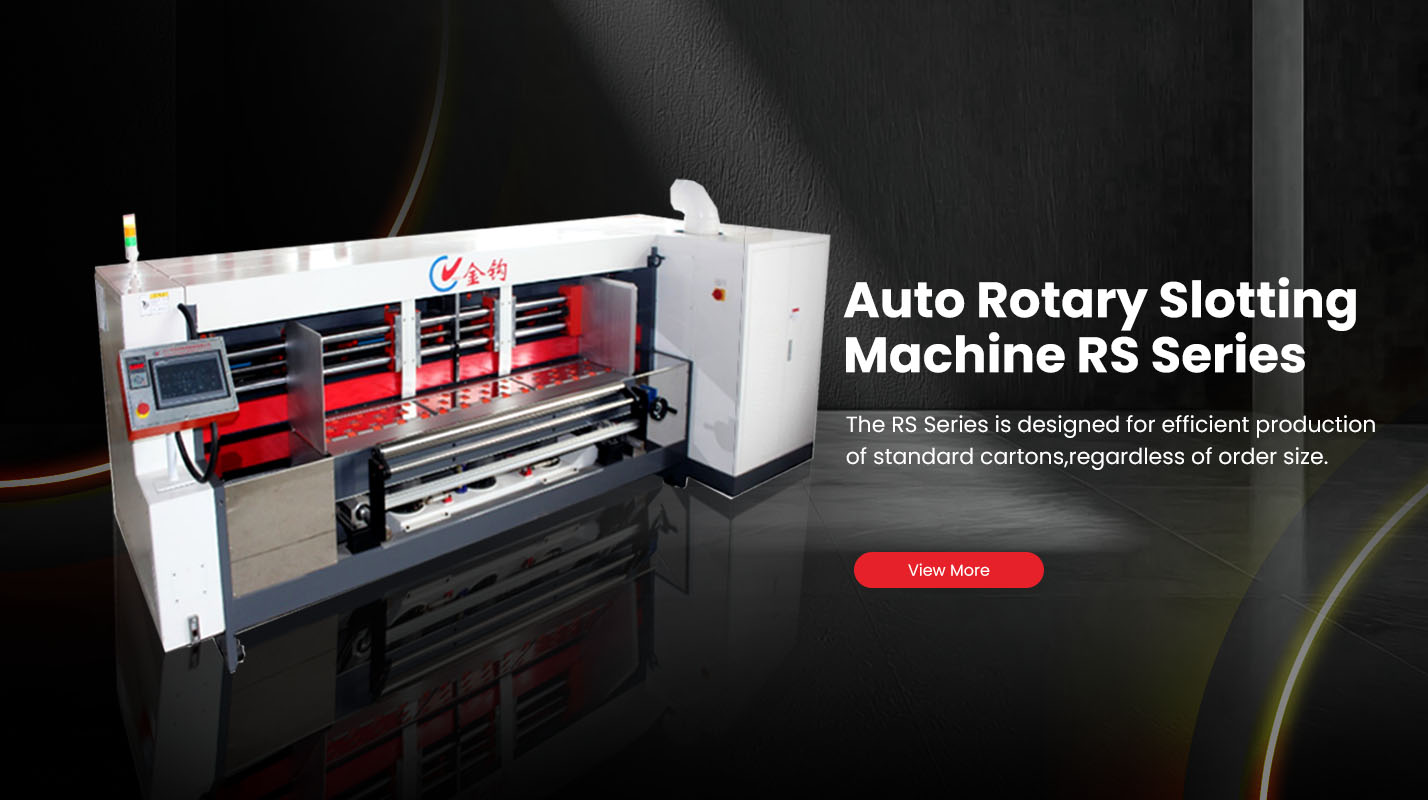How Digital Control Improves Accuracy in Slitting And Scoring Machines
In modern corrugated packaging production, precision and consistency are the foundations of quality. Slitting and scoring machines — essential for converting corrugated sheets into box blanks — rely heavily on accurate knife positioning, stable cutting force, and consistent scoring depth.
Today, digital control systems have transformed these traditional mechanical processes into high-speed, high-accuracy, and data-driven operations.
At JINGOUPACK, advanced digital and servo control technology lies at the heart of every slitting and scoring machine, helping packaging manufacturers achieve faster setups, cleaner cuts, and more precise folds — all while reducing waste and downtime.
What Is Digital Control in Slitting and Scoring Machines?
Digital control refers to the use of PLC (Programmable Logic Controller), servo motors, and touchscreen interfaces to automate machine adjustments and monitor performance.
Instead of manually moving knives and scoring wheels, operators input settings through a digital panel. The system then automatically:
Adjusts knife positions based on box size data.
Synchronizes scoring wheel spacing.
Monitors cutting speed, pressure, and sheet alignment.
Saves and recalls job settings for repeat orders.
This integration of digital control replaces traditional mechanical calibration with software precision, dramatically improving productivity and accuracy.
1. Precise Servo Motor Positioning
The core of digital accuracy lies in servo motor control.
Each slitting and scoring station is equipped with independent servo drives that position blades and scoring wheels with micrometric precision.
Key benefits:
Accuracy within ±0.3 mm during slitting and scoring.
Instant, synchronized adjustment without manual interference.
Smooth and stable motion at high speeds, even during long runs.
This ensures every corrugated sheet maintains exact dimensions, resulting in perfectly aligned box panels and consistent folding lines.
2. Touchscreen Control for Quick Setup
Traditional slitting machines required mechanical tools and manual adjustment for each order — a process that could take 20–30 minutes.
Digital control reduces setup time to just a few minutes.
Operators can:
Input dimensions directly on a touchscreen.
Store up to hundreds of job presets.
Adjust parameters instantly during operation.
This human–machine interface (HMI) eliminates the guesswork of mechanical tuning, allowing even new operators to achieve professional accuracy.
Example: On JINGOUPACK’s latest slitter scorer line, the touchscreen HMI can automatically position all scoring and slitting heads in under 90 seconds.
3. Automatic Synchronization and Alignment
In multi-station slitting and scoring machines, coordination between units is crucial.
Digital control systems automatically synchronize:
Knife rotation speed with sheet feed rate.
Scoring wheel pressure with board thickness.
Conveyor timing between feeding and discharge sections.
Automatic alignment guarantees that each sheet passes through the machine with consistent tension and pressure, preventing skewed scores or uneven cuts — two of the most common causes of box misfolding and glue line errors.
4. Real-Time Monitoring and Feedback
Digital sensors continuously measure performance variables such as:
Sheet position and alignment.
Knife wear and vibration.
Scoring depth and wheel pressure.
These readings are displayed on the operator panel, and the PLC automatically adjusts settings if deviations occur.
Benefits include:
Early detection of mechanical wear.
Real-time error correction.
Reduced scrap rates due to misalignment or over-scoring.
In essence, the system learns and corrects — ensuring stable, repeatable accuracy in every production run.
5. Multi-Job Memory and Remote Diagnostics
Digital control systems can store multiple production recipes — each containing parameters such as box width, slot spacing, and material thickness.
Operators can instantly recall previous settings for recurring box models, reducing:
Setup time between orders.
Material loss from trial runs.
Human error in manual adjustments.
Additionally, machines like those from JINGOUPACK feature remote diagnostic capability.
Engineers can connect to the PLC system online to:
Monitor performance data.
Diagnose electrical or servo issues.
Update control software remotely.
This ensures maximum uptime and reduces the need for on-site service visits.
6. Improved Scoring Consistency and Folding Accuracy
The scoring stage determines how well the corrugated box folds — poor scoring can lead to cracking or irregular edges.
Digital control ensures consistent scoring pressure across the board width, even when handling varied flute types (A, B, C, E).
With precise servo adjustment and load monitoring, scoring depth remains uniform, ensuring:
Clean, smooth folds.
Accurate box dimensions.
Minimal material deformation.
This level of consistency is particularly critical for high-quality packaging applications such as e-commerce boxes, food cartons, and industrial packaging.
7. Data Tracking for Continuous Improvement
Every production run generates valuable data: speed, downtime, sheet count, and error rates.
Digital control systems collect and analyze this data automatically.
Managers can review:
Knife wear patterns.
Average run time per job.
Material waste percentage.
Operator efficiency trends.
By turning data into actionable insights, manufacturers can plan maintenance, optimize scheduling, and continuously improve efficiency.
8. Reduced Human Error and Operator Fatigue
Manual adjustment not only consumes time but also introduces variability.
Digital control simplifies operations so that even less-experienced operators can run complex setups confidently.
Automatic calibration replaces manual measurement.
Alarms and guidance screens reduce operational mistakes.
Intuitive design lowers training time.
As a result, production becomes more consistent, safer, and less dependent on operator skill level.
9. Enhanced Energy Efficiency
Digital systems optimize power usage by adjusting motor loads according to real-time production demand.
Servo motors consume power only when in motion, while variable-frequency drives minimize idle energy consumption.
This contributes to lower operating costs and aligns with modern sustainability goals in packaging production.
10. Integration with Smart Factory Systems
In the era of Industry 4.0, digital slitting and scoring machines are part of a connected ecosystem.
JINGOUPACK’s control architecture supports integration with ERP or MES systems, allowing:
Remote job scheduling.
Real-time production tracking.
Automatic report generation.
This creates a fully digital workflow — from order input to finished carton output — enhancing visibility and efficiency across the entire production line.
Conclusion
Digital control technology has revolutionized the slitting and scoring process, turning it from a manual, error-prone task into a highly accurate, automated operation.
By adopting servo-driven precision, PLC logic, and real-time monitoring, manufacturers can achieve:
Tighter dimensional tolerances.
Reduced setup and downtime.
Lower waste rates and improved product quality.
As a leading manufacturer of corrugated packaging machinery, JINGOUPACK integrates cutting-edge digital control systems across its entire product line — helping customers around the world achieve smarter, faster, and more precise box production.





